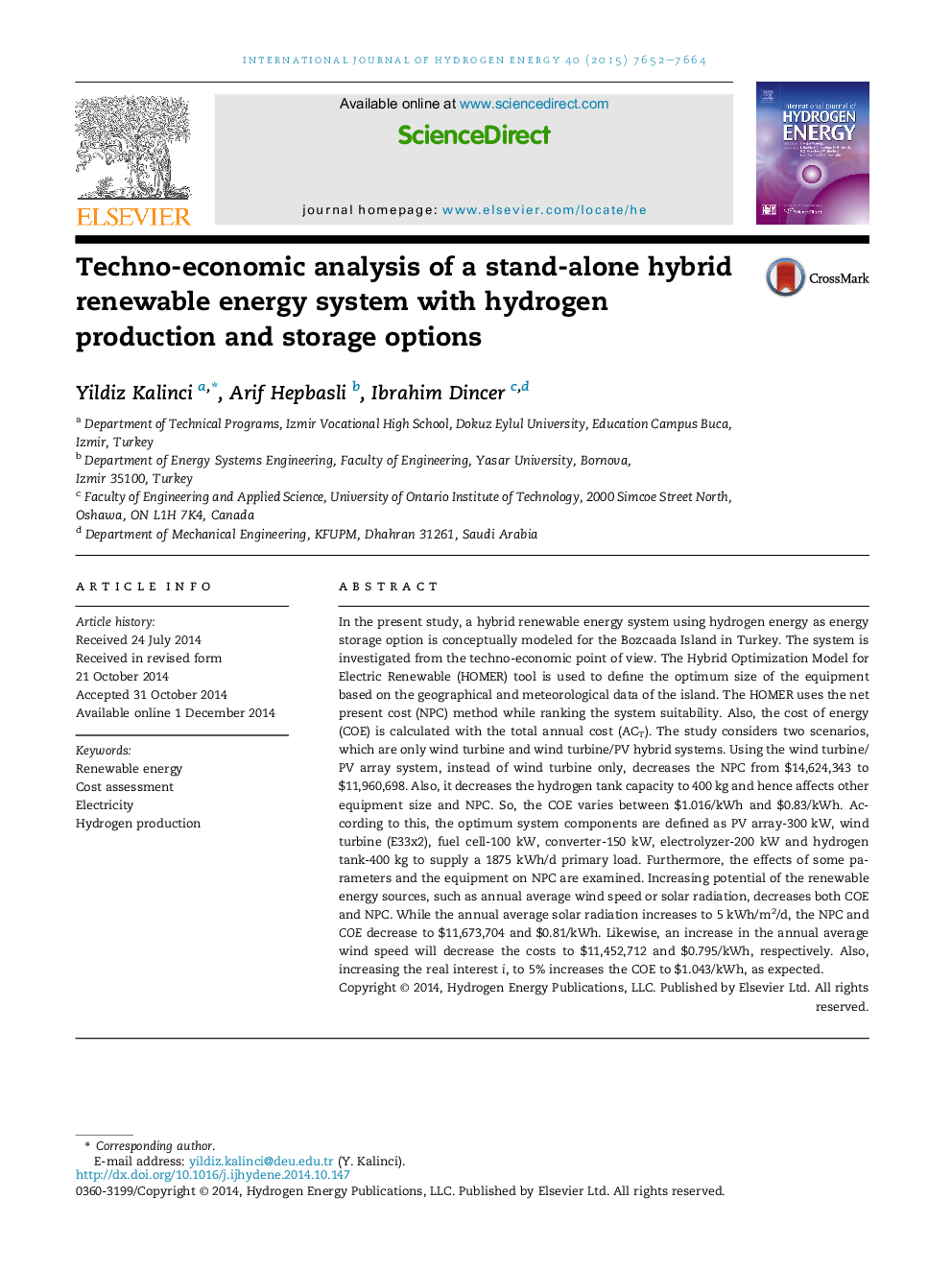| Article ID | Journal | Published Year | Pages | File Type |
|---|---|---|---|---|
| 1279740 | International Journal of Hydrogen Energy | 2015 | 13 Pages |
•Developing hybridized renewable energy option for the island to produce power and hydrogen.•Investigating the suitability of using hydrogen energy as energy storage option from the economic point of view.•Simulating the systems to define optimum system capacities for practical applications.•Examining the effects of some parameters and components on hydrogen production capacity and cost.
In the present study, a hybrid renewable energy system using hydrogen energy as energy storage option is conceptually modeled for the Bozcaada Island in Turkey. The system is investigated from the techno-economic point of view. The Hybrid Optimization Model for Electric Renewable (HOMER) tool is used to define the optimum size of the equipment based on the geographical and meteorological data of the island. The HOMER uses the net present cost (NPC) method while ranking the system suitability. Also, the cost of energy (COE) is calculated with the total annual cost (ACT). The study considers two scenarios, which are only wind turbine and wind turbine/PV hybrid systems. Using the wind turbine/PV array system, instead of wind turbine only, decreases the NPC from $14,624,343 to $11,960,698. Also, it decreases the hydrogen tank capacity to 400 kg and hence affects other equipment size and NPC. So, the COE varies between $1.016/kWh and $0.83/kWh. According to this, the optimum system components are defined as PV array-300 kW, wind turbine (E33x2), fuel cell-100 kW, converter-150 kW, electrolyzer-200 kW and hydrogen tank-400 kg to supply a 1875 kWh/d primary load. Furthermore, the effects of some parameters and the equipment on NPC are examined. Increasing potential of the renewable energy sources, such as annual average wind speed or solar radiation, decreases both COE and NPC. While the annual average solar radiation increases to 5 kWh/m2/d, the NPC and COE decrease to $11,673,704 and $0.81/kWh. Likewise, an increase in the annual average wind speed will decrease the costs to $11,452,712 and $0.795/kWh, respectively. Also, increasing the real interest i, to 5% increases the COE to $1.043/kWh, as expected.
